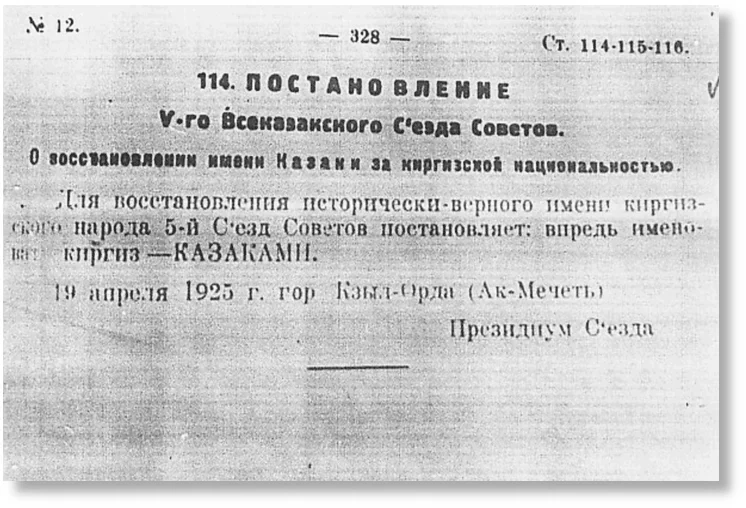Some time ago I took A short look at the short history of Kazahstan through the lens of a 1922 map. In the article now I want to translate another short look at its history, but from a linguistic perspective. What is the name of the people populating the steppe?
Before we proceed, a brief detour into the notation of two Cyrillic letters is in order. Russian letter “Х” is pronounced as “h” in “home”, “he”, hold”, but for some reason it is noted down as “kh” in the Latin notation – the name “Khrushev” has absolutely NO “K” sound in it! So, “Казахстан” is pronounced as “Kazahstan”, even though in the Western notation it will have an extra “k” (Kazakhstan). This brings us to the title of this article: “Казах” is a “Kazah” with the “h”-sound at the end; while a Cossack in Russian is “Казак” – “Kazak” with a trailing “k”.
So with this in mind, let me present a translation of an article that appeared on Cont on the 8th of January 2022.
Is it “Kazahs of Kazahstan” or “Kazaks (Cossacks) of Kazakstan (Cossackstan)”?
Good afternoon, dear readers, today I’m talking about Kazahstan. But we will not talk about what is happening in the republic, but about when and how such a state as KazaHstan appeared…
Quite a long time ago, back in September of last year, I published an article “What have the Russians done for Kazahstan? Just a tiny bit – they built all the cities of the country …” – under it there appeared such a comment that not everyone understood…
Baibek Baibekov
Alexander, It’s true, the Russians really invented the word Kazah, how nice it is to meet a knowledgeable adequate person among the rabid Nazi Fascists, because in fact we are Cossacks, since the middle of the 16th century, that was the name of my people.
One of the responses to this comment was like this…
Ivlev Ilya 23 minutes
Baibek, Cossacks, which ones, of Don, Semirechensk and maybe Volga? You are hilarious Cossacks. There were Cossacks of the war. Not gypsies/nomads. What are you smoking there.
In fact, it is Baibek who is correct in this dispute, not Ilya. I’ll explain why. The fact is that in the Russian Empire there was no such people as Kazahs, there were Kirgiz. Specifically, those who now consider themselves Kazahs were called Kirgiz-Kaysaks (киргиз-кайсак)…
Even the lands that now belong to Kazahstan were called the Kirghiz-Kaysak steppe…
After the revolution, until 1925, these lands were part of the RSFSR and were called the Kyrgyz ASSR (Autonomous Soviet Socialist Republic). In 1925, the republic was renamed the Kazak (Cossack) ASSR, that’s right, not Kazah, but KazaK (Cossack)… With the letter K…
It was decided to call the people inhabiting these lands for Kazaks (Cossacks), such a decision was made at the 5th All-Kazak Congress of Soviets…
On restoration of the name Kazak, pertaining to the Kirgiz nationality. To restore the historically correct name of the Kirgiz people, the Congress decrees: to henceforth call the Kirgiz for KAZAKS
At the same time, the city of Orenburg was withdrawn from the Kazak (Cossack) ASSR and returned to the RSFSR, and the city of Ak-Mosque, aka the city of Perovsk, was made the capital of the new republic. Along with the status, the city received a new name, now it was called Kyzyl-Orda.
In 1927, the capital of Kazakstan will be moved to Alma-Ata, and until 1936, the Kazakstan ASSR was part of the RSFSR, on the rights of an autonomy.
And only in 1936, the status of the republic will be elevated to the Union level, and at the same time, its name will be changed from Kazak (Cossack) to Kazah… Since then, Kazahs have been living on these lands… But I think if you search well, you can still find people who were born at a time when there was no such people as the Kazahs.
The pre-1917 text: Calling themselves as Cossack or Kaysak (free), they, like all Kirhiz, revere the first ancestor of their Alacha Khan, from whose three sons, according to their legend, three hordes descended: fronm the first comes Uysun-the big horde (Ulu-Yuz) or the Pokolnye Uysun; from the second – Kurgan-the middle Horde (Orta- Yuz), or generation Argynskoe; from the final Alchin – a smaller horde (Kichi-Yuz), or the generation of Alchintsev. The descent of the children of their families took place, and from the families there came branches – Genghis Khan gave special nicknames (Urans) and signs (Tamgas) to the clans, for different reasons, with which the Kirgiz mark their things, cattle, and which serve them for handicraft…
There were Kirgiz, with a narrower definition: Kirgiz-Kaysaks. And they called themselves Kazaks (Cossacks)…
Author: LEV VALERYEVICH ITSKY




